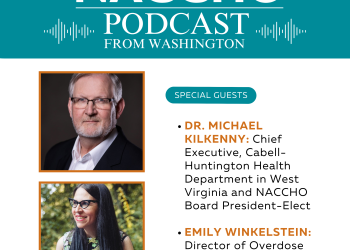
The relationship between chronic disease and disability is a complex and often overlooked aspect of public health. While chronic diseases can lead to disabilities over time, the same is true for disabilities leading to chronic diseases. This mutual impact highlights the need to fully understand and address these connected health issues.
Centers for Disease Control and Prevention (CDC) defines a disability as any physical or mental impairment that can limit a person’s participation in the world around them. The same disability can affect two people very differently, so developing an inclusive and adaptable understanding of people with disabilities is crucial. Disabilities can lead to secondary conditions – such as pain, fatigue, poor mental health – and chronic diseases. Chronic disease is any condition that lasts over one year and requires ongoing medical care or limits daily activity. While chronic disease prevention efforts can be used to prevent disability, people with disabilities are often at a higher risk for these same preventable chronic diseases.
Chronic Disease, Disability, and Aging: Understanding the Connection
A CDC study on disability as a precursor to chronic conditions discovered that people with lifelong disabilities are at a higher risk of developing chronic disease compared to those who do not have a lifelong disability. As our national population ages, both disability and chronic disease prevalence are expected to rise. With this growing population, accurately defining individual and coexisting conditions becomes increasingly crucial. Given the interdependent relationship between chronic diseases and disabilities, the increasing prevalence of chronic illnesses and comorbidities also heightens the risk of disability and mortality.
“Data indicate[s] that chronic conditions are prevalent among people with disabilities; however, research [on the] temporal relationships between disability and health outcomes is limited. Considerable research has addressed disability because of chronic conditions.”
– Disability Status as an Antecedent to Chronic Conditions: National Health Interview Survey, 2006–2012
Key Strategies for Disability-Inclusive Public Health Engagement
Local health departments can take the following steps to better understand the needs of people with disabilities:
- Build sustainable and intentional inclusion: Creating sustainable means of inclusion requires a permanent line of communication with community partners that serves the needs of people with disabilities. Things like focus groups, community surveys, and key stakeholder interviews can help provide feedback on health department initiatives and data analyses to build a framework for LHDs to serve the needs of the population. NACCHO offers training on how to Leverage Partnerships with Disability Organizations to accomplish this objective.
- Increase the accessibility of communications materials created by LHD: Using assistive technology, people-first language, and reasonable accommodations not only ensures that communications and program resources are accessible to people with disabilities but also simplifies these materials for people of all ages and abilities.
- Use publicly available data: The CDC’s Disability and Health Data System (DHDS) and The Behavioral Risk Factor Surveillance System (BRFSS) can provide preliminary insight into the needs of the community. Using data and tailored epidemiology methods to better understand the needs of the local community.
Through the Reaching People with Disabilities through Healthy Communities project - a CDC-funded project with the National Association of Chronic Disease Directors (NACDD) – 5 counties across 10 states have implemented disability inclusion strategies in their local communities. In Montana, Lewis and Clark County and the Healthy Communities Coalition have exemplified increasing access to recreation and healthy food for people with disabilities. By recruiting community members of various abilities to audit their walking paths, they were able to identify and reconcile any gaps in their recreational system in Lewis and Clark County. In Marion County, Ohio, participants of the same NACDD project launched a mobile food pantry to mitigate the problem of food deserts and inaccessible healthy food options for people with disabilities. The mobile food pantry removed the barrier of transportation and physical accessibility for people with disabilities. Initiatives like these can help make healthier lifestyles more accessible for people with disabilities, which can make a significant impact in preventing chronic disease from developing.

If LHDs start now to create a framework of disability inclusion into chronic disease prevention, this will create a prepared public health landscape for people with a disability, chronic disease, or both, as they are expected to grow. Underlying these efforts is the unifying principle of universal design. Universal design is an inclusive approach aiming to create products, environments, and systems that people of diverse abilities use. It integrates usability, ensuring ease of use; accessibility, removing barriers for individuals with disabilities; and inclusivity, considering a broad range of users, irrespective of differences. The goal is to provide a seamless and equitable experience for everyone. Taking a universal design approach to LHD programs and protocols ensures that health departments are always prepared to address different ability levels.
The relationship between chronic diseases and disabilities demands a holistic approach to public health initiatives. Recognizing the bidirectional nature of this connection is crucial for designing effective interventions. As the prevalence of chronic diseases and disabilities rises, LHDs are encouraged to design and implement inclusive strategies. By fostering a prepared and adaptable public health landscape, we can ensure that everyone, regardless of ability, is included in the journey toward a healthier and more equitable future - promoting a society where health truly knows no boundaries.



